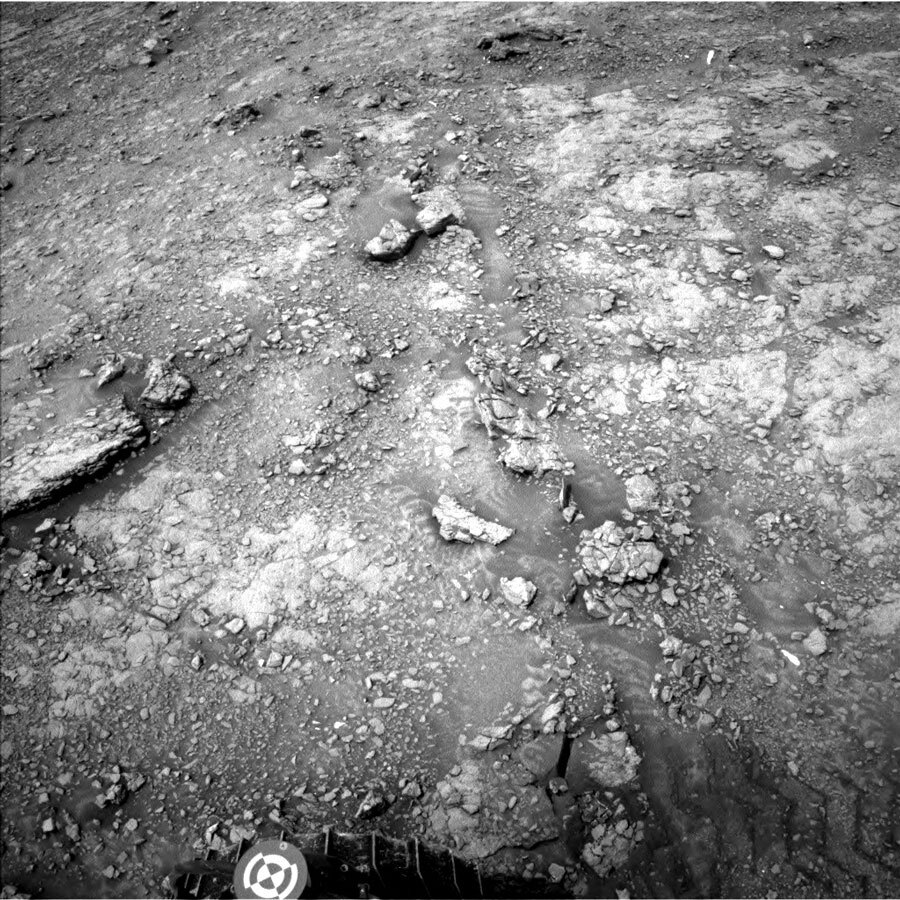2 min read

Today the rover continues to drive towards our next potential drill location, the first planned pit stop on our summer road trip. By the time Curiosity arrives at the designated drill area, she will have travelled over 23 km since landing on Mars. But driving across the rocky Martian surface isn’t always easy; sharp obstacles and jagged rocks have caused some minor damage to the rover’s wheels over the years. In order to check on the condition of the wheels and track their degradation over time, the team periodically images them with the MAHLI camera. As it happens, we are due for a new set of wheel images, so today’s “drive” is a bit unique: the rover will only travel a little over a meter, just enough to image one full rotation of the wheels.
Before this unusually short drive, the rover will acquire data on the local geology; bedrock targets “Cateran Trail” and “Cowal Way” will be targeted with the ChemCam instrument and imaged with Mastcam for documentation purposes. Mastcam will also capture stereo mosaics of nearby features of interest named “Fife Coastal Path” (a rock fracture) and “Glenfinnan Viaduct” (tilted rocks). Navcam will also be used to image sediment that has accumulated on the rover deck. After the wheel imaging, standard post-drive images will be acquired with Hazcam, Navcam, and Mastcam. There will also be two ChemCam AEGIS observations and two larger Mastcam mosaics, one of our target drill area and one of a more distant geologic contact. Lastly, three observations (two with Navcam and one with Mastcam) will be used to monitor dust activity in Gale crater.
Although our wheels have suffered some damage over the years, they’re still very capable of taking us where we need to go and we continue to make good progress on our strategic path. We expect to arrive at our designated drill location by the weekend, and we will be back on the road once our drill is complete!
Written by Mariah Baker, Planetary Geologist at Center for Earth & Planetary Studies, Smithsonian National Air & Space Museum







